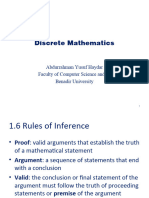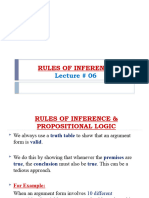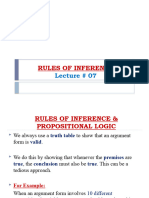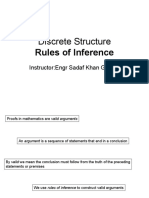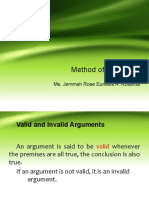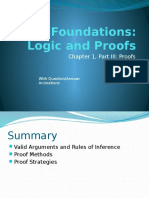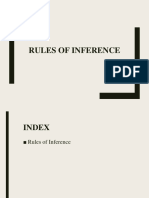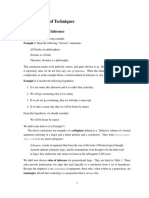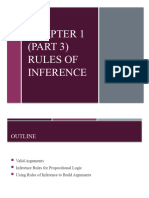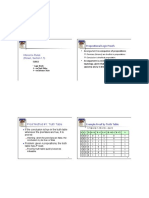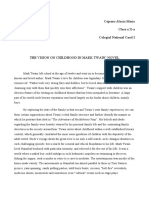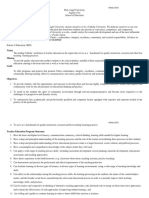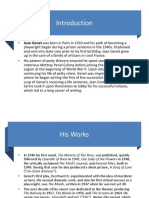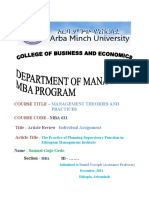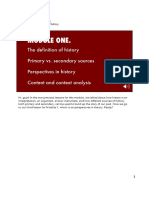0% found this document useful (0 votes)
6 views32 pagesLecture 4 RulesOfInference
The document discusses the concept of valid arguments in mathematics, emphasizing that a valid argument's conclusion must logically follow from its premises. It introduces rules of inference, particularly modus ponens, and explains how to construct valid arguments using propositional logic. The document also illustrates the process of building arguments through examples and the application of inference rules.
Uploaded by
marryamsaeed011Copyright
© © All Rights Reserved
We take content rights seriously. If you suspect this is your content, claim it here.
Available Formats
Download as PPT, PDF, TXT or read online on Scribd
0% found this document useful (0 votes)
6 views32 pagesLecture 4 RulesOfInference
The document discusses the concept of valid arguments in mathematics, emphasizing that a valid argument's conclusion must logically follow from its premises. It introduces rules of inference, particularly modus ponens, and explains how to construct valid arguments using propositional logic. The document also illustrates the process of building arguments through examples and the application of inference rules.
Uploaded by
marryamsaeed011Copyright
© © All Rights Reserved
We take content rights seriously. If you suspect this is your content, claim it here.
Available Formats
Download as PPT, PDF, TXT or read online on Scribd
/ 32


